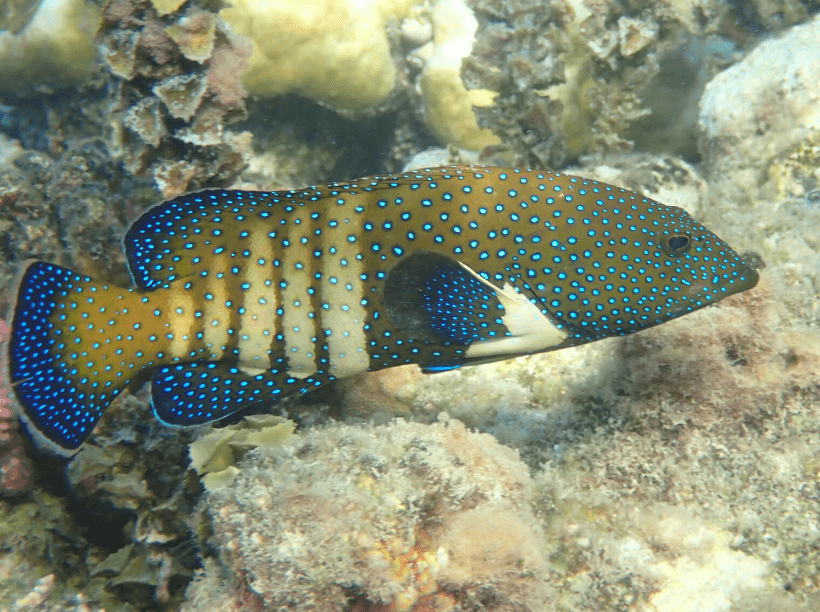Other names: Roi, Bluespotted grouper, Celestial grouper
The Peacock Grouper (Cephalopholis argus), also known as the Blue-Spotted Grouper, is a reef-dwelling species native to the Indo-Pacific region. It is easily identified by its dark brown body covered with vibrant blue spots. This species is a voracious predator, feeding on small fish and crustaceans. Peacock Groupers are popular in the aquarium trade but are considered invasive in some areas due to their aggressive nature and impact on local ecosystems.

Other names
Roi, Bluespotted grouper, Celestial grouper
![]() Length
Length
~20" (max 60)
![]() Weight
Weight
~1" (max 3)
![]() Water
Water
Salt
![]() Water Temp
Water Temp
22-28° F
![]() Depth
Depth
1-40 ft
-
-
-
-
-
-
-
-
Peacock Groupers prefer coral reefs, particularly areas with plenty of hiding spots in crevices and caves
They are often found in shallow to moderately deep waters, typically near the reef’s edge
Their diet mainly consists of small fish and invertebrates, which they ambush from their hiding spots
These groupers are solitary and territorial, defending their chosen area aggressively
Peacock Groupers are protogynous hermaphrodites, meaning they begin life as females and can later change to males
Spawning occurs during specific seasons, often correlated with lunar cycles, when they release eggs into the water column
Juveniles settle on coral reefs after hatching, finding shelter in small crevices until they grow larger
As they mature, individuals become more territorial, with males establishing dominance over a specific area or group of females